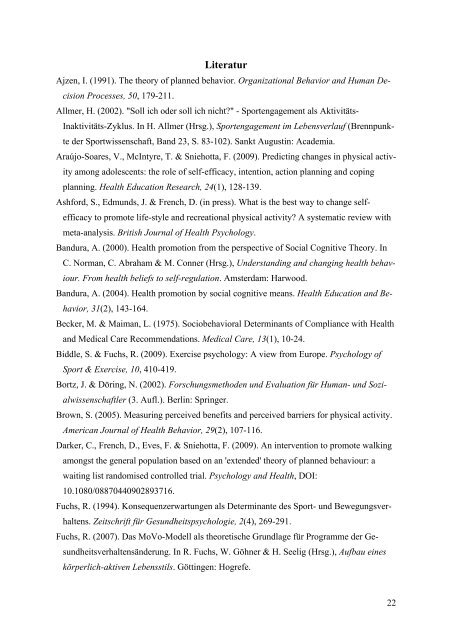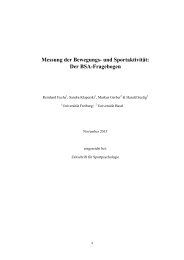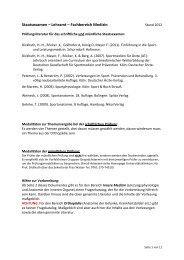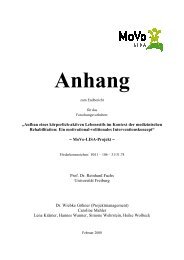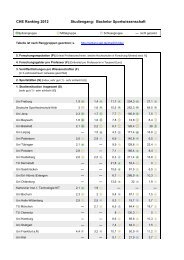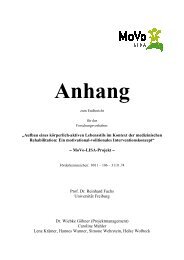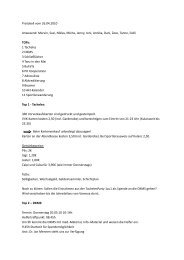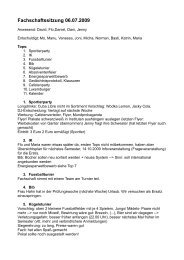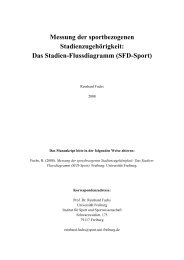Barrieren und Barrierenmanagement im Prozess der Sportteil ...
Barrieren und Barrierenmanagement im Prozess der Sportteil ...
Barrieren und Barrierenmanagement im Prozess der Sportteil ...
Erfolgreiche ePaper selbst erstellen
Machen Sie aus Ihren PDF Publikationen ein blätterbares Flipbook mit unserer einzigartigen Google optimierten e-Paper Software.
Literatur<br />
Ajzen, I. (1991). The theory of planned behavior. Organizational Behavior and Human De-<br />
cision Processes, 50, 179-211.<br />
Allmer, H. (2002). "Soll ich o<strong>der</strong> soll ich nicht?" - Sportengagement als Aktivitäts-<br />
Inaktivitäts-Zyklus. In H. Allmer (Hrsg.), Sportengagement <strong>im</strong> Lebensverlauf (Brennpunk-<br />
te <strong>der</strong> Sportwissenschaft, Band 23, S. 83-102). Sankt Augustin: Academia.<br />
Araújo-Soares, V., McIntyre, T. & Sniehotta, F. (2009). Predicting changes in physical activ-<br />
ity among adolescents: the role of self-efficacy, intention, action planning and coping<br />
planning. Health Education Research, 24(1), 128-139.<br />
Ashford, S., Edm<strong>und</strong>s, J. & French, D. (in press). What is the best way to change self-<br />
efficacy to promote life-style and recreational physical activity? A systematic review with<br />
meta-analysis. British Journal of Health Psychology.<br />
Bandura, A. (2000). Health promotion from the perspective of Social Cognitive Theory. In<br />
C. Norman, C. Abraham & M. Conner (Hrsg.), Un<strong>der</strong>standing and changing health behav-<br />
iour. From health beliefs to self-regulation. Amsterdam: Harwood.<br />
Bandura, A. (2004). Health promotion by social cognitive means. Health Education and Be-<br />
havior, 31(2), 143-164.<br />
Becker, M. & Ma<strong>im</strong>an, L. (1975). Sociobehavioral Determinants of Compliance with Health<br />
and Medical Care Recommendations. Medical Care, 13(1), 10-24.<br />
Biddle, S. & Fuchs, R. (2009). Exercise psychology: A view from Europe. Psychology of<br />
Sport & Exercise, 10, 410-419.<br />
Bortz, J. & Döring, N. (2002). Forschungsmethoden <strong>und</strong> Evaluation für Human- <strong>und</strong> Sozi-<br />
alwissenschaftler (3. Aufl.). Berlin: Springer.<br />
Brown, S. (2005). Measuring perceived benefits and perceived barriers for physical activity.<br />
American Journal of Health Behavior, 29(2), 107-116.<br />
Darker, C., French, D., Eves, F. & Sniehotta, F. (2009). An intervention to promote walking<br />
amongst the general population based on an 'extended' theory of planned behaviour: a<br />
waiting list randomised controlled trial. Psychology and Health, DOI:<br />
10.1080/08870440902893716.<br />
Fuchs, R. (1994). Konsequenzerwartungen als Determinante des Sport- <strong>und</strong> Bewegungsver-<br />
haltens. Zeitschrift für Ges<strong>und</strong>heitspsychologie, 2(4), 269-291.<br />
Fuchs, R. (2007). Das MoVo-Modell als theoretische Gr<strong>und</strong>lage für Programme <strong>der</strong> Ge-<br />
s<strong>und</strong>heitsverhaltensän<strong>der</strong>ung. In R. Fuchs, W. Göhner & H. Seelig (Hrsg.), Aufbau eines<br />
körperlich-aktiven Lebensstils. Göttingen: Hogrefe.<br />
22


